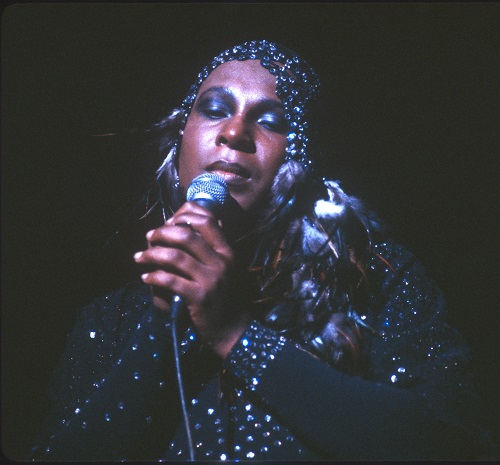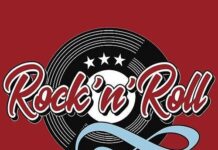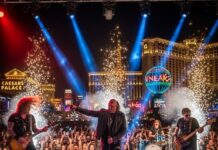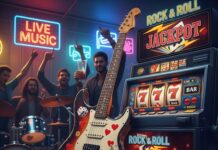By Ira Kantor
On July 12, 1979, “Disco Demolition Night” was held at Comiskey Park in Chicago. The attending throngs (not just White Sox fans) made sure to bring their related disco paraphernalia to burn in effigy, which they did eagerly and excessively. It was a joke that soon turned serious. After a dumpster full of disco records was blown up on the ball field, the real melee got underway, leaving the grass ripped up and scorched and leading to the forfeiture of a second game in a White Sox/Detroit Tigers double-header.
Even though disco-fueled music would thrive well into the following year, the writing was suddenly on the proverbial wall for the overtly hedonistic yet undeniably accessible genre.
What’s amazing to realize in hindsight is how just a mere four months earlier, one of disco’s greatest moments took place. But let me back up for a second and provide some further context. New York City is often spoken of as disco’s primary home base, exacerbated by Steve Rubell and Ian Schrager’s Avalon-esque palace Studio 54. Yet let’s remember that on the other side of the country — particularly in San Francisco — disco became just as hot and celebrated a commodity.
On March 11, 1979, pioneering disco artist and queer icon Sylvester took at the stage at the San Francisco War Memorial Opera House and for more than two hours tried to bring the house down. With a 26-piece orchestra, thumping 4/4 bass rhythms, and his Two Tons O’ Fun backing crew of Martha Wash (remember “Everybody dance now!”) and Izola Rhodes-Armstead in tow, the falsetto-singing songbird (peacock, swan, phoenix, you name it), they came pretty damn close.
Having repeatedly listened to the one-two live musical punch of “Dance (Disco Heat)” and “You Make Me Feel (Mighty Real),” especially during the pandemic, I always wondered what this concert experience was actually like. Where once we had Sylvester’s 1979 album Living Proof for answers, I’m now quite happy to know that Sylvester’s full concert, Live At The Opera House, will soon be available to the masses via Craft Recordings (hang tight until September!). In receiving an advance copy of the full concert, I emphatically state that among the many, many things we should celebrate during Pride month, it’s the work of Sylvester — the openly gay, openly fabulous, openly confident, and openly trendsetting artist.
Last year, I read Joshua Gamson’s thorough bio about Sylvester, The Fabulous Sylvester: The Legend, The Music, The Seventies in San Francisco. Though Sylvester would tragically pass away in 1988 at age 41 from AIDS-related complications, this show is Gamson’s book come to life. You no longer will have to strain yourself visualizing the costumes, the bright lights, the glistening sweat, and most importantly, the jubilation coming from both the crowd and Sylvester himself — a much-needed catharsis in the wake of Harvey Milk’s assassination the previous November.
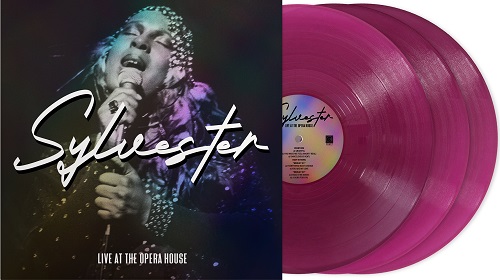
For Sylvester, the Opera House is his Madison Square Garden. Beloved in San Francisco, he relishes and revels in the experience of performing in front of more than 3,000 friends, family, and fans. He’s not shy about telling audience members to get on their feet and truly take in what they’re witnessing. As a wonderful hometown tribute, Sylvester even receives the key to the city during his show. Through 13 tracks — many of which stretch to 10 minutes or more — Sylvester takes us to church, synagogue, and every divine realm in-between. Ultimately, he leaves his heart, soul, and vocals on the stage; a fitting situation given his decade-long journey from being part of avant-garde drag troupe, The Cockettes, to fronting his own rock band, to striking literal gold with his second solo album (Step II), to being embraced for never trying to hide his identity or be someone fitting within society’s idea of conformity.
In music, this wasn’t always easy to come by — just Wikipedia “Jobriath” to see what I mean.
Live At The Opera House is equal parts cabaret, Broadway, and smoke-laden underground club. As genuine and heartfelt as various show moments can be, there’s also moments of great levity (whether they are intentional or not). As Izora and Martha sing to the rafters on “Body Strong,” Sylvester appears to join them in three-part harmony and immediately laments “Well, we fucked that up, didn’t we?” But in knowing his audience is with him all the way, he just shakes it off and presses on with poise and grace.
Cover tracks, including a medley of Barry Manilow’s “Could It Be Magic” with Leon Russell’s “A Song For Now,” the Beatles’ “Blackbird,” and Patti Labelle’s “You Are My Friend,” become Sylvester’s own staples, all backed by groove, sweet sensuality, and ever-present cowbells. The somberness of “Blackbird,” in particular, transitions into triumph and is steered into choir-worthy territory as Sylvester, Izora, and Martha all joyfully play and sing off each other.
For anyone thinking that disco is nothing but gloss and over-produced tripe, I implore you to listen to the 1-2-3, foot-stomping “Dance (Disco Heat),” “Mighty Real,” and a glorious rendition of “Never Can Say Goodbye” to close out the show. Sylvester proves happy to go toe-to-toe and larynx to larynx with anyone who thinks he can’t compete with brass players and opulent surroundings. Simply put, Sylvester is the LGTBQIA+ community’s Aretha Franklin but even if we took his artistry out of this context, he would still be a near-perfect replication of Aretha herself.
On “Never Can Say Goodbye,” before he departs the stage, Sylvester extends his love and appreciation to everyone in attendance, assuaging fears that he will never officially say goodbye to San Francisco, his undeniable home and solace. In multiple listens of this concert from beginning to end, I’m reminded that Sylvester was, is, and always will be a trailblazer — perhaps the most beautiful of musical rainbows.
Certainly the brightest and most colorful.


